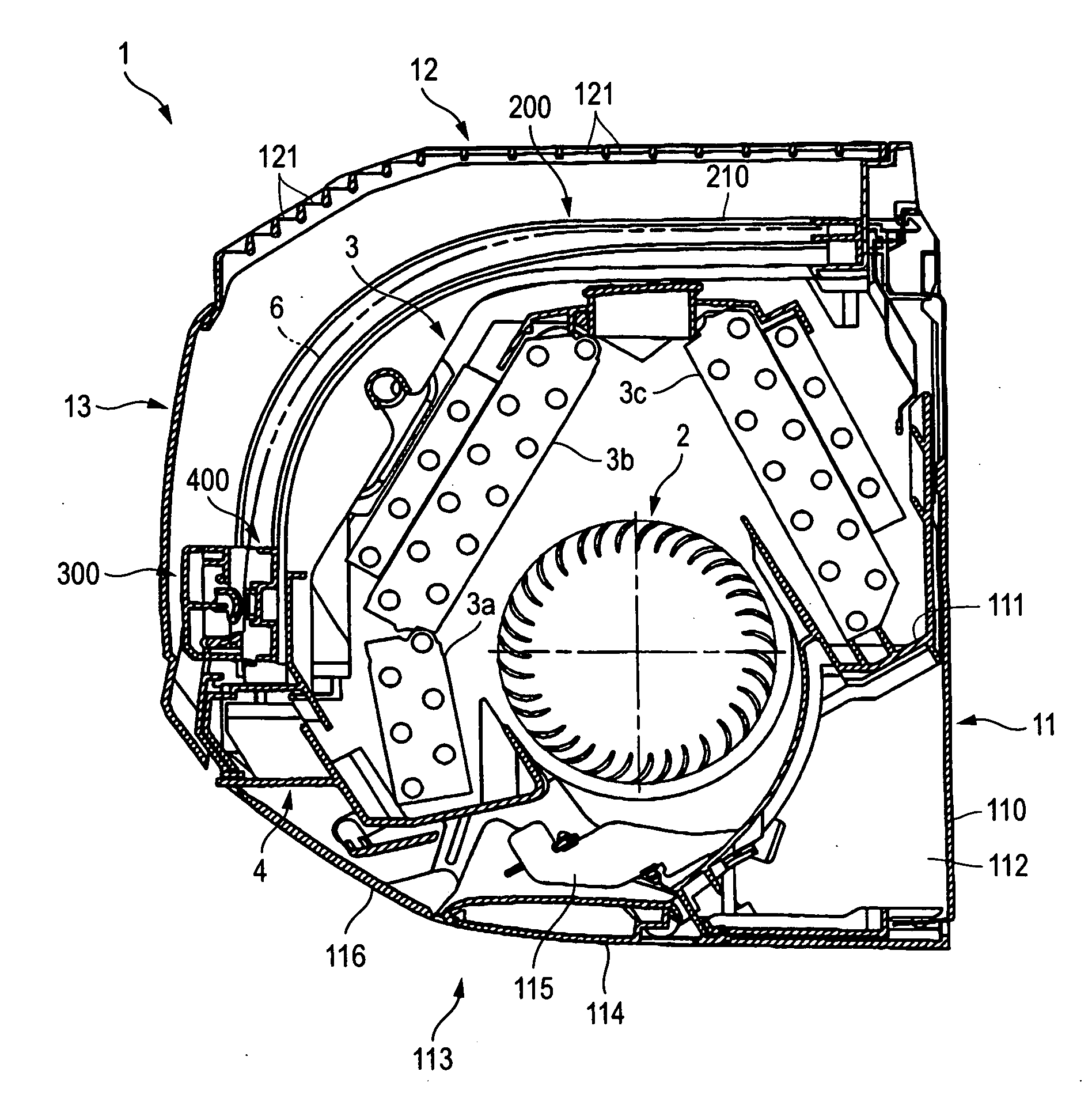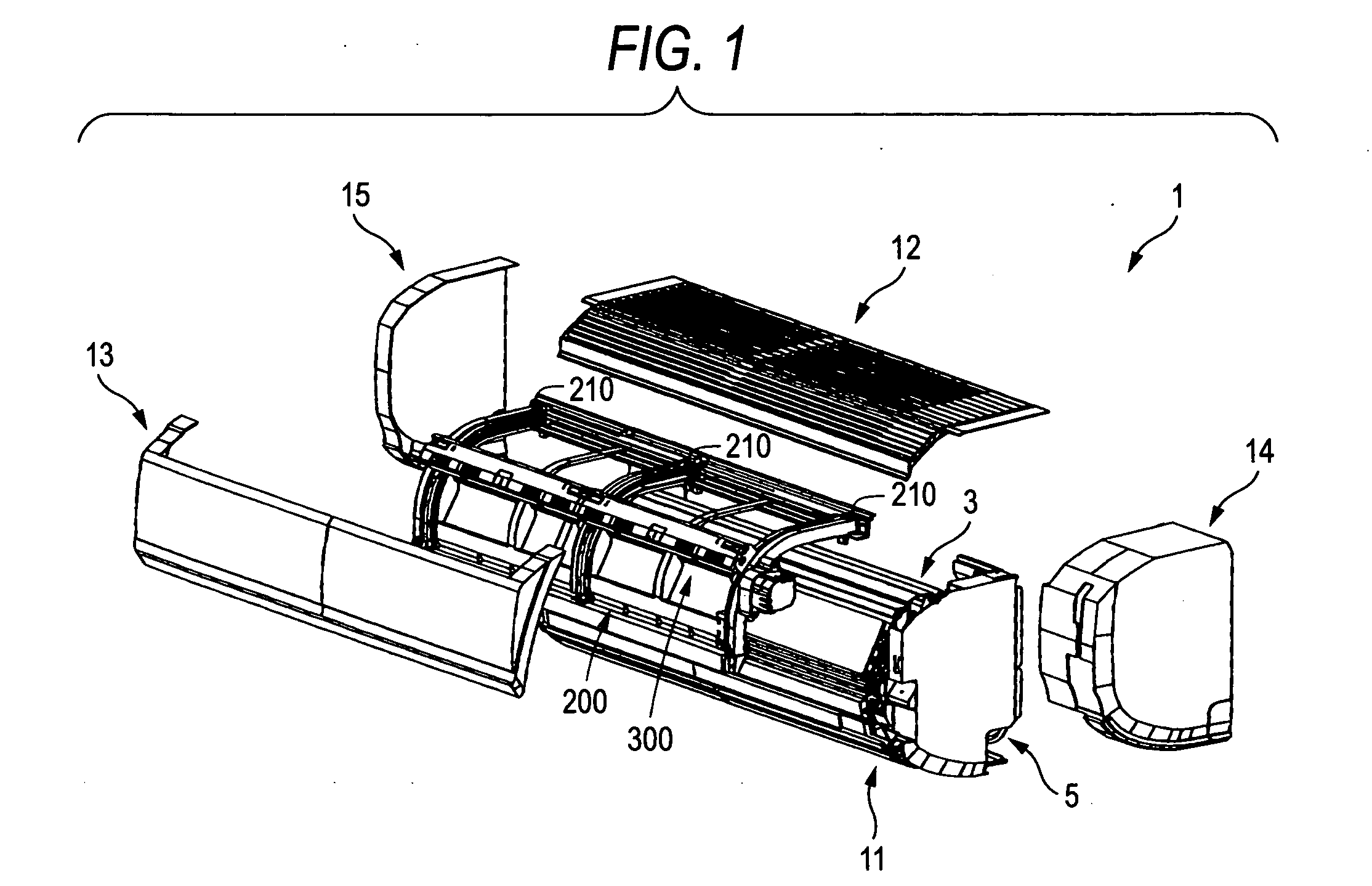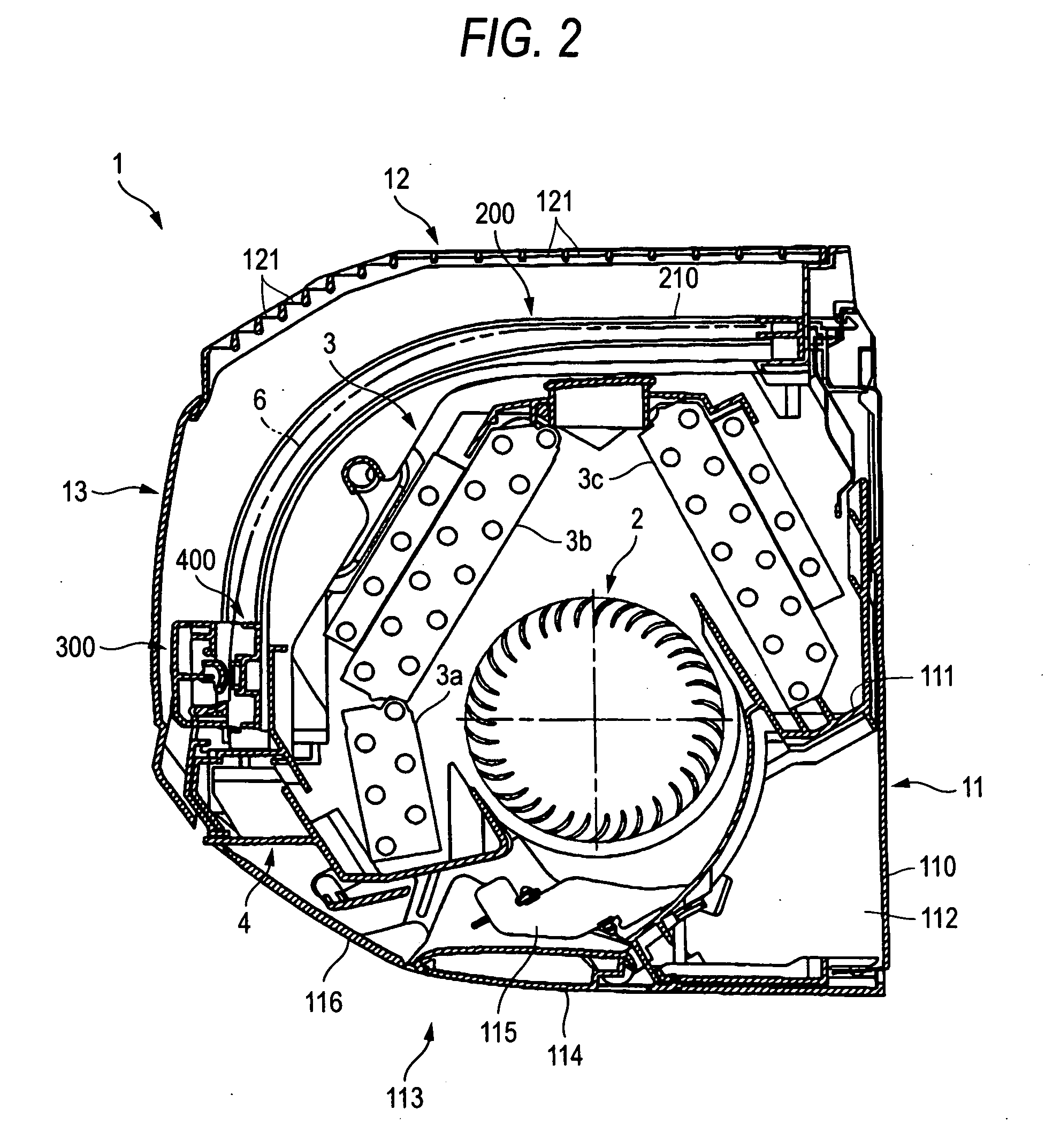Air conditioner and method for assembling the same
- Summary
- Abstract
- Description
- Claims
- Application Information
AI Technical Summary
Benefits of technology
Problems solved by technology
Method used
Image
Examples
first embodiment
(First Embodiment)
[0159] Now referring to the drawings, an explanation will be given of an embodiment of this invention. FIG. 1 is an exploded perspective view of an air conditioner according to an embodiment of this invention. FIG. 2 is a longitudinal sectional view of the air conditioner.
[0160] As seen from FIGS. 1 and 2, a body cabinet 1 of this air conditioner includes a back plate 110 attached onto a wall through an attaching screw (not shown), a base 11, an upper panel 12, a front panel 13, a right side panel 14 and a left side panel 15. All these members are molded problowers of synthetic resin. The body cabinet incorporates a cross-flow fan 2 serving as a blower fan, a heat exchanger 3, a drain pan 4, etc.
[0161] The base 11 is attached to the back plate 110 by a pair of right and left side plates (not shown) formed to overhang toward the wall from both sides of the heat exchanger 3. Between the side plates, the cross-flow fan 2 and heat exchanger 3 are supported. In this e...
second embodiment
(Second Embodiment)
[0233] Further, FIG. 18 is a perspective view of a second embodiment of an air conditioner according to this invention. FIG. 19 is a view for explaining the second embodiment of this invention; FIG. 19A is a first sectional view thereof, and FIG. 19B is an enlarged view of the main part thereof. FIG. 20 is a second sectional view of the second embodiment of the air conditioner according to this invention. FIG. 21 is a third sectional view of the second embodiment of the air conditioner according to this invention. FIG. 22 is a view for explaining a third embodiment of an air conditioner according to this invention; FIG. 22A is a first sectional view thereof, and FIG. 22B is an enlarged view of the main part thereof. FIG. 23 is a second sectional view of the third embodiment of the air conditioner according to this invention. FIG. 24 is a third sectional view of the third embodiment of the air conditioner according to this invention. FIG. 25 is a view for explainin...
third embodiment
(Third Embodiment)
[0251] Now referring to FIGS. 8 and 22 to 25, as the third embodiment, an explanation will be given of the configuration and operation in which the top panel 1001b is forcibly outwardly opened in contact with the dedusting device 1007.
[0252] The dedusting device 1007, as seen from FIG. 22A as a first state, is constructed with a dimension A from the air filter 1004 to the outer face of the case of the dedusting device 1007. The dedusting device 1007 is accommodated within a range of dimension B from the opposite air filter 1004 to the front panel 1001a, opposite to the lower end of the front face of the air filter 1004 in a relationship of “dimension A<dimension B”.
[0253] The top panel 1001b is adapted so that it can be translated vertically by a linkage mechanism 1010 provided on both sides of the top panel 1001b so that the dedusting device is not brought into contact therewith.
[0254] Further, the top panel 1001b is mounted on the upper part of the air conditi...
PUM
| Property | Measurement | Unit |
|---|---|---|
| Angle | aaaaa | aaaaa |
Abstract
Description
Claims
Application Information
 Login to View More
Login to View More - R&D
- Intellectual Property
- Life Sciences
- Materials
- Tech Scout
- Unparalleled Data Quality
- Higher Quality Content
- 60% Fewer Hallucinations
Browse by: Latest US Patents, China's latest patents, Technical Efficacy Thesaurus, Application Domain, Technology Topic, Popular Technical Reports.
© 2025 PatSnap. All rights reserved.Legal|Privacy policy|Modern Slavery Act Transparency Statement|Sitemap|About US| Contact US: help@patsnap.com



